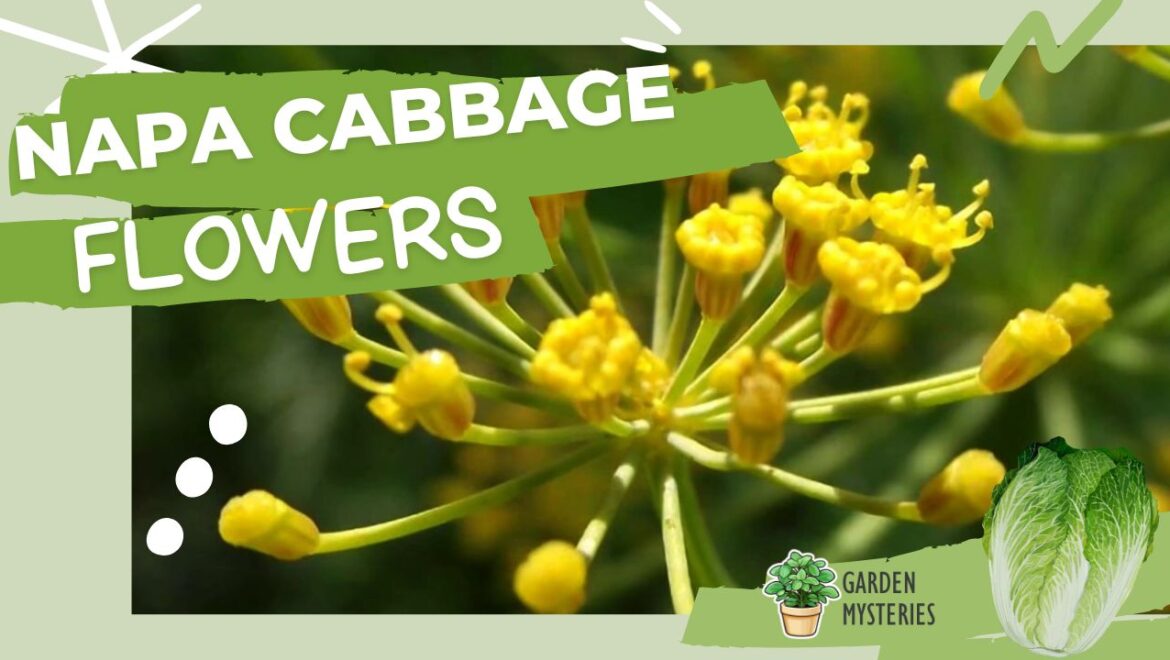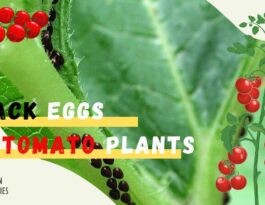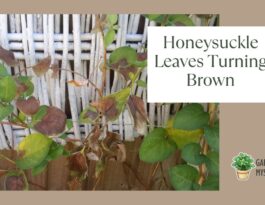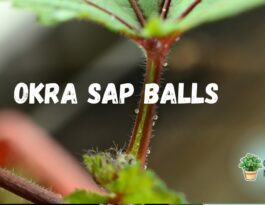I was very happy with my napa cabbage harvest until I saw it started flowering. I got worried and asked my mother what to do when I saw napa cabbage flowering.
She told me that, it happens when certain conditions cause its natural bolting process for environmental stressors like high temperatures and extended daylight hours. If your napa cabbage is flowering, you should promptly harvest the cabbage to salvage the best leaves.
When Does Napa Cabbage Grow Flowers?
Napa cabbage (Chinese cabbage) typically begins to grow flowers when it experiences conditions that trigger its natural bolting process. Bolting, the premature transition to flowering, usually occurs when the plant perceives stress for environmental factors like high temperatures and extended daylight hours.
Once the plant senses these stressors, it redirects its energy from leaf growth to producing flowers and seeds. Typically, napa cabbage is more prone to bolting in warmer temperatures above 60-70°F (15-21°C) and during periods of prolonged daylight.
To prevent or delay bolting, it’s advisable to plant napa cabbage during cooler seasons, providing adequate shading during hot spells, and verifying consistent moisture levels. Harvesting the cabbage promptly when you notice flowering can help maintain the best flavor and quality of the leaves
What do Napa Cabbage Flowers Look Like?
Napa cabbage (Chinese cabbage) flowers are small and distinctive, typically characterized by their vibrant yellow color. These flowers emerge on elongated stalks that rise from the center of the plant.
The flowering stalks stand out from the main leafy portion of the cabbage, showcasing a contrasting appearance. The flowers themselves consist of multiple petals that form a compact cluster at the top of the stalk.
Their shape can be somewhat star-like, with the petals radiating outward from a central point. As the flowers develop, they can create a visual contrast against the cabbage’s broad green leaves.
However, when napa cabbage begins flowering, it’s an indication that the plant is shifting its energy towards reproduction, potentially leading to changes in the texture and flavor of the edible parts. Therefore, prompt harvesting is recommended to preserve the quality of the cabbage leaves.
What to Do If My Napa Cabbage is Growing Flowers?
If your napa cabbage is growing flowers, it’s an indication that the plant is undergoing the natural process of bolting, where it diverts its energy from leaf growth to flower and seed production.
While flowering is a natural part of the plant’s life cycle, it can impact the quality of the edible leaves. Here’s what you can do if you find your napa cabbage flowering:
Harvest Promptly
Once you notice the flowering stalks, it’s important to harvest the cabbage promptly. The leaves may become bitter, tough, or less flavorful as the plant shifts its focus to reproduction.
Assess the Situation
Consider the environmental conditions that might have triggered bolting. High temperatures and prolonged daylight hours are common culprits. If possible, provide some shade during the hottest parts of the day to alleviate stress.
Adjust Watering
Maintain consistent and adequate moisture levels in the soil. While overwatering should be avoided, verifying the plant’s hydration can help reduce stress.

Temperature Management
If high temperatures are the cause of bolting, consider planting napa cabbage during cooler seasons. You can also try growing them in a location that receives partial shade to moderate temperature extremes.
Timing
Plan your Chinese green planting schedule to avoid the period when your region experiences its hottest temperatures and longest daylight hours. This can help prevent or delay the bolting process.
Collect Seeds
If you’re interested in saving seeds, allow a few flowers to mature and produce napa cabbage seeds. This can be a valuable opportunity to cultivate your own napa cabbage plants in the future.
Plant Succession
To assure a steady supply of napa cabbage, practice succession planting by sowing new seeds every few weeks. This way, you’ll have a continuous harvest and can avoid relying on plants that are more likely to bolt.
Use the Leaves
While the flowering stalks might not be suitable for consumption, you can still use any remaining healthy leaves. Harvest the leaves from the outer parts of the plant and use them in your napa cabbage recipes before they become affected by the bolting process.
In summary, once your napa cabbage starts flowering, prioritize prompt harvesting, assess the environmental conditions, and consider preventive measures for future plantings.
While you might not be able to entirely prevent bolting, you can minimize its impact and continue to enjoy the delicious and nutritious leaves of napa cabbage.
Are you curious about whether squirrels eat broccoli or not? You’ll find out the details in the article.

How to Grow Napa Cabbage?
Growing napa cabbage, also known as Chinese cabbage or pak choi, can be a rewarding experience if you provide the right conditions for its growth. Napa cabbage is a cool-season vegetable that thrives in moderate temperatures. So, it is well-suited for spring and fall cultivation. Here’s a comprehensive guide to help you grow healthy and flavorful napa cabbage:
Step 1: Site Selection
- Choose a location that receives partial to full sun and has well-draining soil. Prepare the soil by adding compost to improve its fertility and structure.
Step 2: Planting
- Start napa cabbage seeds indoors about 4-6 weeks before the last frost date in your area. Transplant seedlings outdoors when they have at least two true leaves.
- Alternatively, you can directly sow napa cabbage seeds in the garden about 2-4 weeks before the last frost date.
Step 3: Spacing
- Space napa cabbage plants are about 12 to 18 inches apart to give them room to grow and assure proper air circulation.
Step 4: Soil Preparation
- Napa cabbage prefers slightly acidic to neutral soil with a pH of around 6.0 to 7.5.
- Work in well-rotted compost or aged manure before planting to improve soil structure and provide essential nutrients.
Step 5: Watering
- Keep the soil consistently moist but not waterlogged. Avoid letting the soil dry out completely between waterings.
- Use mulch to help retain soil moisture and regulate soil temperature.
Step 6: Fertilization
- Apply a balanced fertilizer before planting and side-dress with additional fertilizer as the napa cabbage plants grow. Follow the recommendations on the fertilizer packaging.
Step 7: Pest and Disease Control
- Monitor for pests like cabbage worms, aphids, and slugs. Handpick or use natural and organic pest control methods if needed.
- Proper spacing and good air circulation can help prevent diseases like clubroot and damping-off.
Step 8: Thinning
- If you’re starting from seeds, thin out the seedlings when they’re a few inches tall to maintain the recommended spacing between plants.
Step 9: Harvesting
- Napa cabbage matures relatively quickly, usually within 60 to 85 days from planting.
- Harvest the entire head by cutting it at the base using a sharp knife. You can also harvest outer leaves as needed without disturbing the central growth point.
Step 10: Succession Planting
- To ensure a continuous harvest, consider planting new batches of napa cabbage every few weeks.
Step 11: Preventing Bolting
- To minimize the risk of bolting, plant napa cabbage early in the spring or late in the summer, avoiding the hottest part of the growing season.
- Provide shade during the hottest part of the day if temperatures are rising.
Step 12: Saving Seeds (Optional)
- Allow a few napa cabbage plants to flower and produce seeds if you’re interested in saving seeds for future planting seasons.
By following these steps and providing consistent care, you can successfully grow napa cabbage with tender leaves and excellent flavor. Adjust your approach to Chinese green based on your local climate and conditions for the best results.
FAQs
Can I eat napa cabbage that’s flowering?
While you can still use the healthy leaves of flowering napa cabbage, the flowering stalks, and any affected leaves may have altered taste and texture. Harvesting promptly is recommended.
Can I save napa cabbage seeds from the flowers?
Yes, you can allow a few flowers to mature and produce seeds. This can be an opportunity to collect seeds for future plantings if you’re interested in seed saving.
Are there napa cabbage varieties that are less prone to flowering?
Some napa cabbage varieties are bred to be more resistant to bolting. Look for “bolt-resistant” or “slow-bolting” varieties when selecting seeds to reduce the chances of premature flowering.
Don’t forget to go through essential vegetable gardening tips. These will help you greatly. Best wishes.





